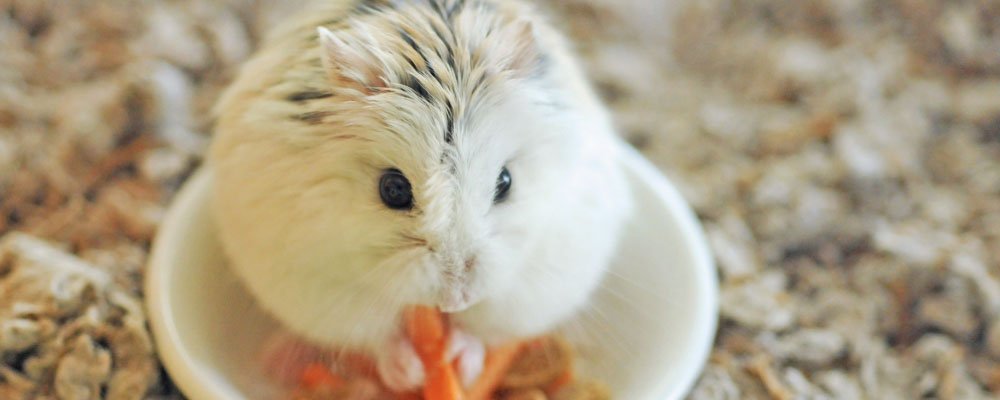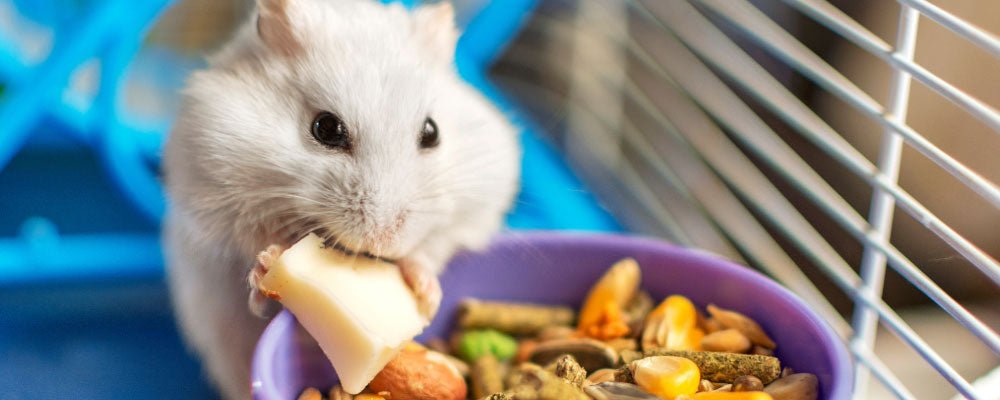
Roborovski & Chinese Hamsters - Our Guide
What is a Roborovski Hamster?
A rarer dwarf hamster, the roborovski hamster, is less well known than the syrian, campbell and winter white hamsters, but its social nature and petite size have very recently made it a popular choice for those who like responsive, small hamsters. Hailing from Mogolia, China, and Russia, the roborovski hamster was discovered in 1894 by Lieutenant Roborovsky who was undertaking a nature survey in Russia.
Robos, as they are called, live in groups in single-entrance burrows in flat, sandy areas. They awaken later than other dwarf hamsters and are most active after 9pm. They are of course well adapted to living in cold temperatures and like the Campbell's, can concentrate their urine to conserve water.
How big are Roborovski Hamsters?
Roborovski's are small hamsters, with a body length of about 5cm and they have a golden brown fur with a grey base on the upper two-thirds of the body, with a dark dorsal stripe. The tail, stomach, legs, nose, and eyebrows are all white, and the pallid eyebrows seem to give this hamster a perpetually quizzical expression
How long does a Roborovski Hamster live for?
The life span of robos in captivity is up to three and a half years, but some have lived as long as four years. They live well in same-sex pairs and are fast-moving hamsters, quick to scurry out of the way when they feel you might actually open their cage.
Same-sex groups seem to live together quite nicely, particularly if introduced to each other while they are young. Temporary cage partitions that allow odour transfer and visual contact are a feasible way to introduce new-comers to each other.
What are Chinese Hamsters?
Relatively rare to find in homes in Europe, the Chinese hamster comes from northern China and Mongolia and inhabit rocky terrain and is therefore a good climber. Their burrows are often shallow, perhaps because it's hard to dig a deep burrow in rocky areas, but can be up to 3 feet deep, with sleeping and food chambers branching off from the main tunnel. Their burrows may have two entrances.
During spring and summer, all members of this genus are active day and night, but they become more nocturnal as the days shorten. Although they do not hibernate, they do sleep longer during the short-day cycle.
How big are Chinese Hamsters?
Chinese hamsters are small, slight hamsters, dark grey in colour with a darker dorsal stripe. The belly is ivory to grey. The body length is normally 10cm with a weight of about 30 grams and the tail is 3cm long. The cheek pouches of Chinese hamsters are very large.
The Chinese hamster is one of the less social hamsters and only tolerate the presence of another Chinese hamster of the opposite sex and only then just long enough to breed. These are shy hamsters that don't move as quickly as the other species.



Leave a comment
This site is protected by reCAPTCHA and the Google Privacy Policy and Terms of Service apply.